- Home
- Chiyoda Highlights
- From Edo Castle ruin to the place for prayer of Tokugawa Shogunate. Nine places related with Ieyasu.

"Dosuru Ieyasu(What Would You Do, Ieyasu?)"is a historical drama broadcast by NHK since January 2023. The drama depicts the life of TOKUGAWA Ieyasu, who united the country and became Shogun at the end of a turbulent era. The story of Ieyasu, known to all Japanese, will attract even those who are not familiar with history.
Edo Castle, which Ieyasu based in, was constructed at the place of The Imperial Palace, Chiyoda city today. Around the site, there are many places and facilities which Ieyasu was involved. This time, we would like to introduce nine selected places related to Ieyasu. To enjoy and feel more enthusiasm for the drama, we recommend you visit these sites.
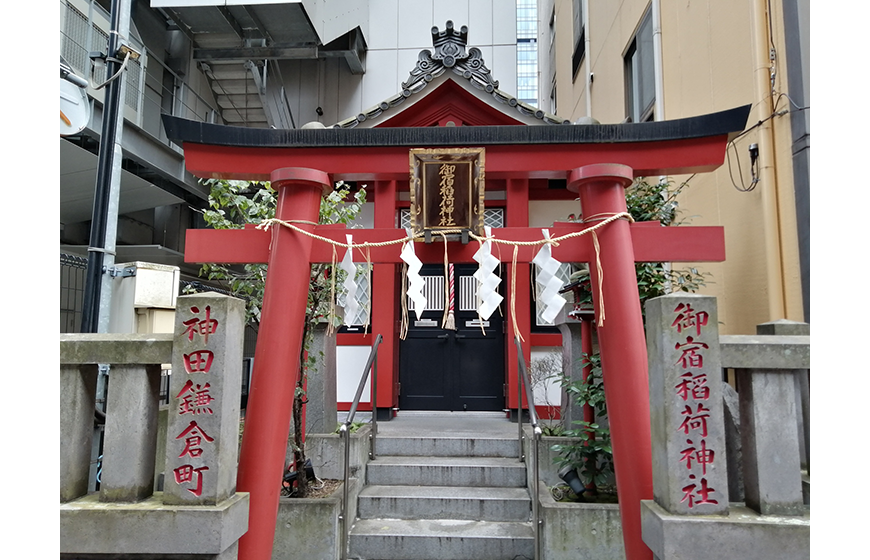
Onjuku Inari Shrine is a 4-minute walk from Otemachi Station. Uchi-kanda 1-chome, where this shrine is, used to be called Musashinokuni Toshimagun Kandamura.
It is said that when Tokugawa Ieyasu relocated his territory to Kanto by order of TOYOTOMI Hideyoshi, the house he used as an accommodation was in this Musashinokuni Toshimagun Kandamura. Later, the shrine enshrined in this house was named "Onjuku Inari Shrine" in memory of Ieyasu's lodging.
Later, the shrine pavilions of Onjuku Inari Shrine burned down in the war damage. But object of worship was not damaged. The shrine pavilions were once rebuilt in 1956 and in 2007, they were newly built.
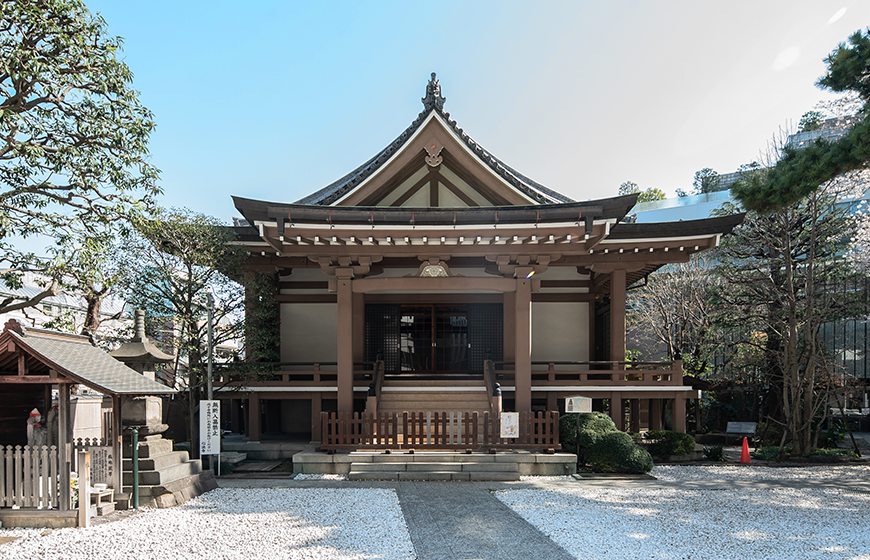
Simpoji Temple is located from 4-minute walk from JR Yotsuya Station. It is a Jodo sect temple opened by NENOSEIZAN Shonin, who moved to Edo with Tokugawa Ieyasu from Mikawano Kuni, located Aichi prefecture today.
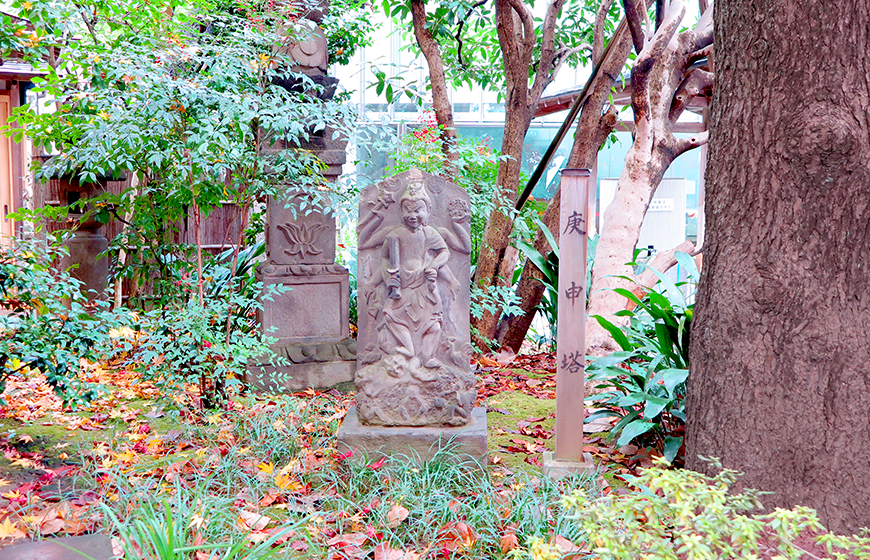
Within the premises, Koshinto-pagoda resides, which is Designated Cultural Property of Chiyoda city.
Ieyasu accompanied Nenouseizan Shonin to Edo and did not want him to return to Mikawa. Ieyasu offered to give Nenoseizan Shonin a large temple site in Ichigaya in exchange for staying in Edo. But Nenoseizan Shonin turned down this offer and said, "If a priest is well fed and clothed, he will become a sloth and start to hate serving Buddha." and also said "I would like this temple to make a popular one for townspeople who move to Edo." Then in 1597, Shinpoji Temple was constructed in 1597 at the present place.
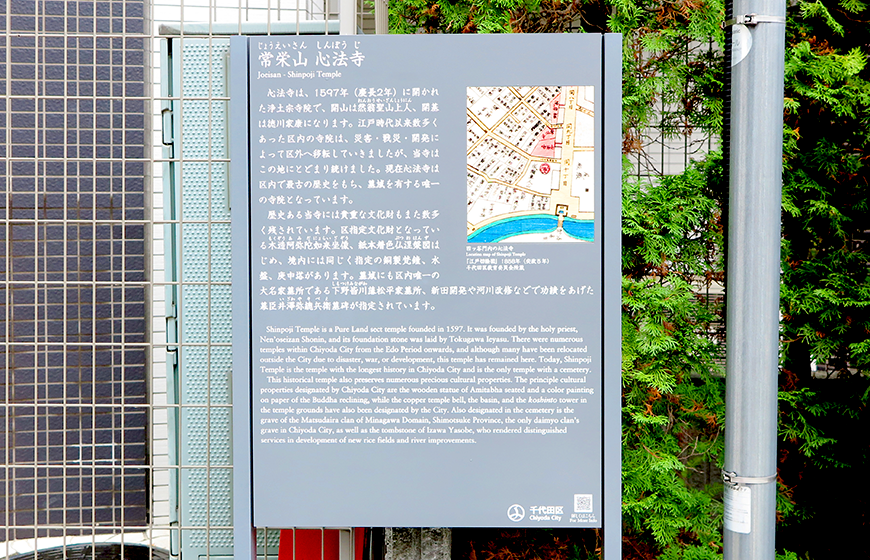
Since Edo era, many temples were relocated due to war damage or city development but this Shimpoji Temple continued to stay in this place. Currently, Shimpoji is known as a temple that has the longest history in this area.
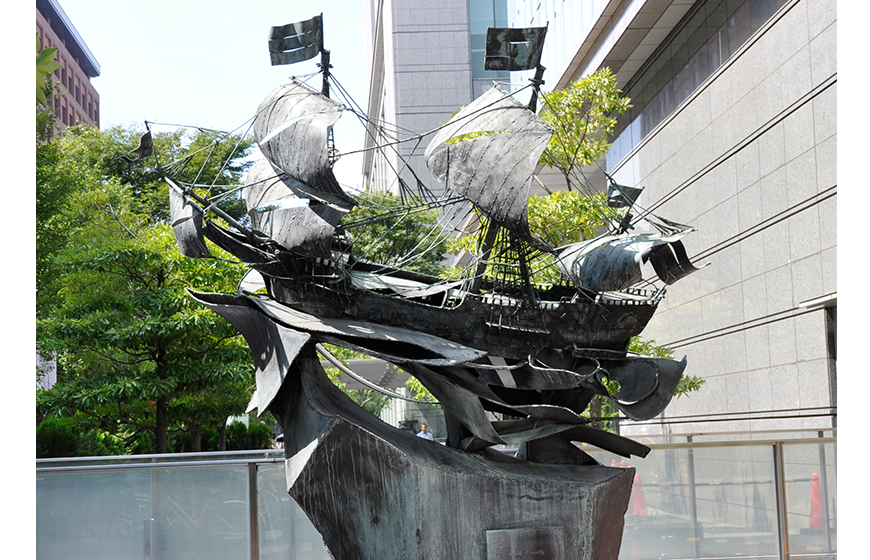
Marunouchi Building directly connected to Tokyo Metro Marunouchi Line Tokyo Station. The Statue of De Liefde is located beside Marunouchi Building, familiarly known as Marubiru.
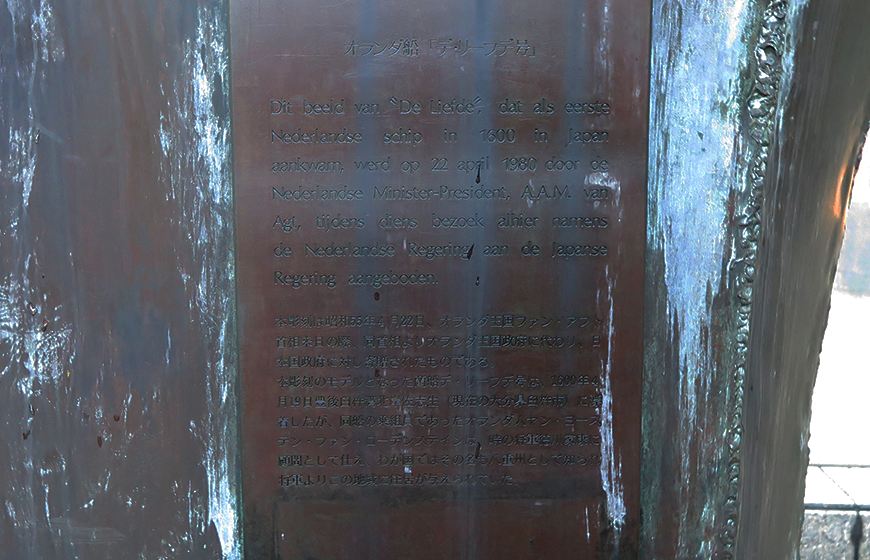
Marunouchi 2-chome, where this Statue of De Liefde stands, was once the site of the Yaesu river bank. The name Yaesu came from Jan joosten, a Dutch sailor.
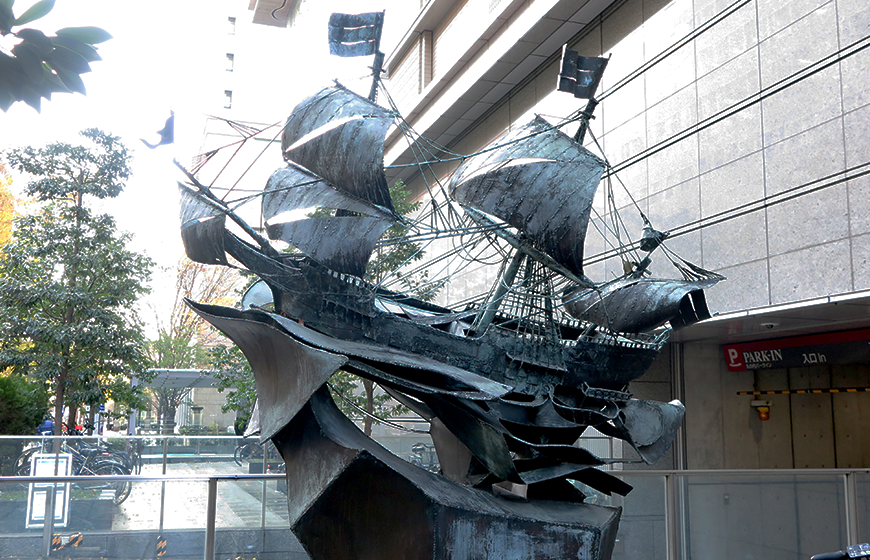
Back in 1600, Jan Joosten drifted down to Kyushu on a Dutch ship the De Liefde. Later, he earned the confidence of Tokugawa Ieyasu and became an advisor of foreign diplomacy and gunnery. In the Battle of Sekigahara, which broke out in the same year, he used cannons and artilery troops of the De Liefde and contributed to Ieyasu's victory. It is said that as the mansion given to Jan Joosten was located from Babasakimon to the edge of the moat of Wadakura today, people started calling this moat "Yayosu river bank" and later it became Yaesu shore" (different from the present-day place) and the name prevailed.
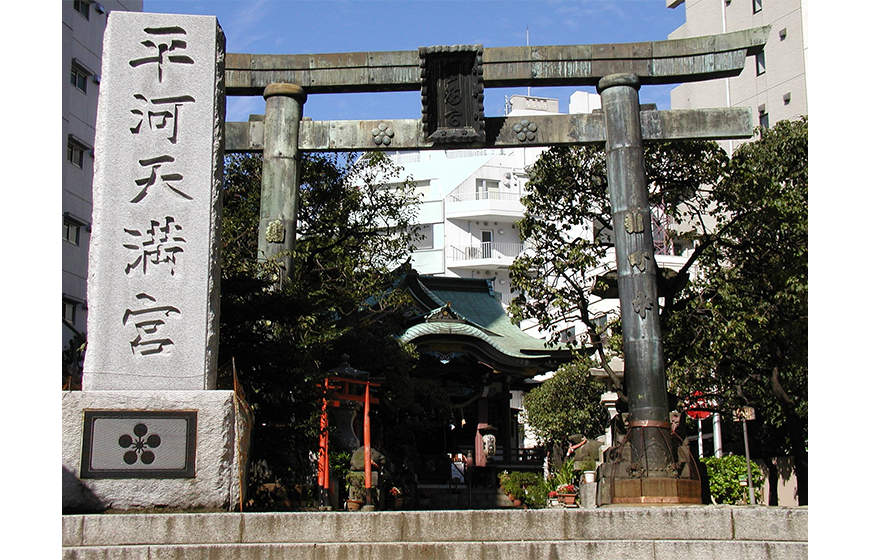
At first, it was located inside Edo Castle, but in association with the construction of the castle keep by Tokugawa Ieyasu and furthermore, with an extention construction by TOKUGAWA Hidetada, it was relocated to the present place. Tokugawa Ieyasu as well as main diety SUGAWARA Michizane are worshipped.
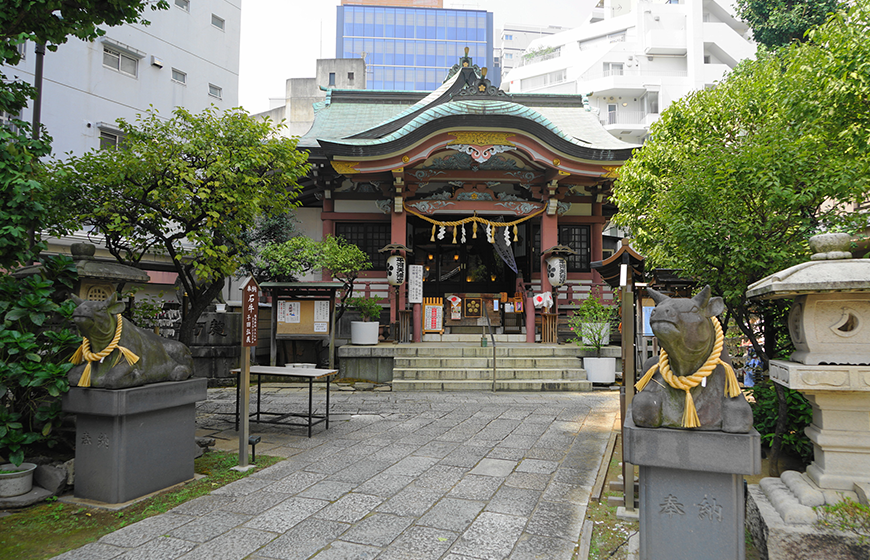
Hirakawa Tenmangu was the place for prayer not only for Tokugawa Shogunate but also for Kishu Domain Tokugawa family and Hikone Domain Ii family. The shrine was treated as special social status. For example, at New Year's Celebration, Chief priest could meet with Shogun individually.
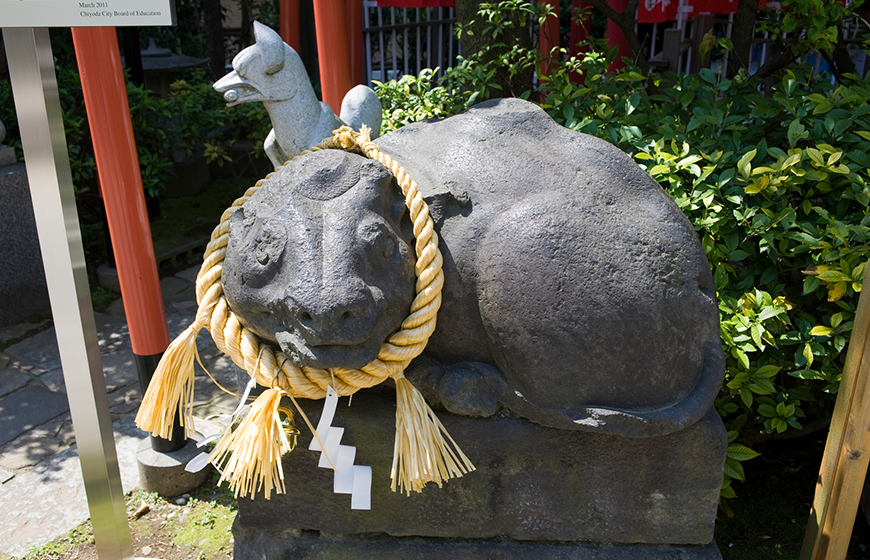
A Statue of Nadeushi sits on the left as you enter the precincts. Since old times, ox have been believed to be a messenger of Sugawara Michizane, who was born in the year of Ox sign of the zodiac. According to tradition, if you whisper a wish to the divine Ox, you can receive good luck. If you want to be healthy, you stroke the part of the body you are concerned about and if your wish is related to learning, you should stroke the head.
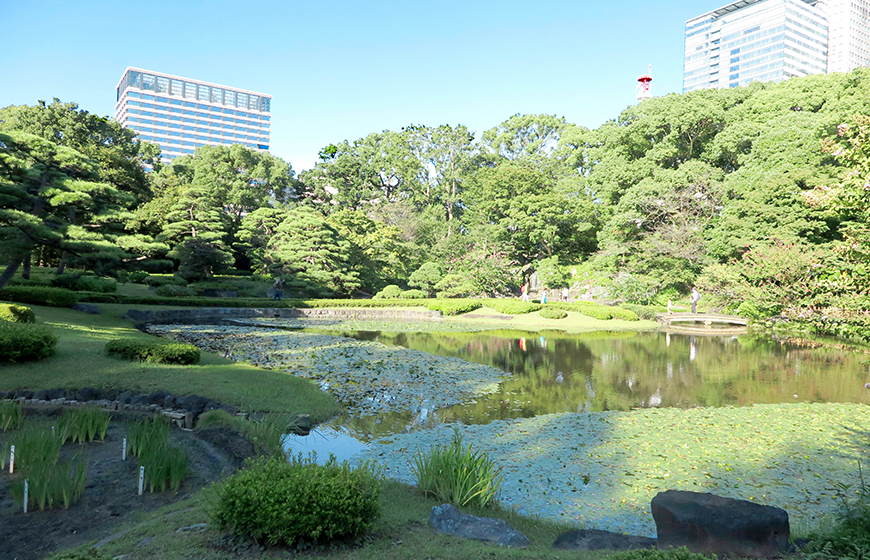
The East Garden of the Imperial Palace is 5-minute walk from Subway Otemachi Station or Takebashi Station. This is the garden attached to the Imperial Palace where you can see a lot of histric sites. Inside the garden, the former site of Edo Castle is now open to the public as a lawn square, you can see closely the Tenshu-dai base of the main tower whose tower wasn't reconstructed and Fujimi Yagura (Mt.Fuji view keep) used instead of the tower of the castle.
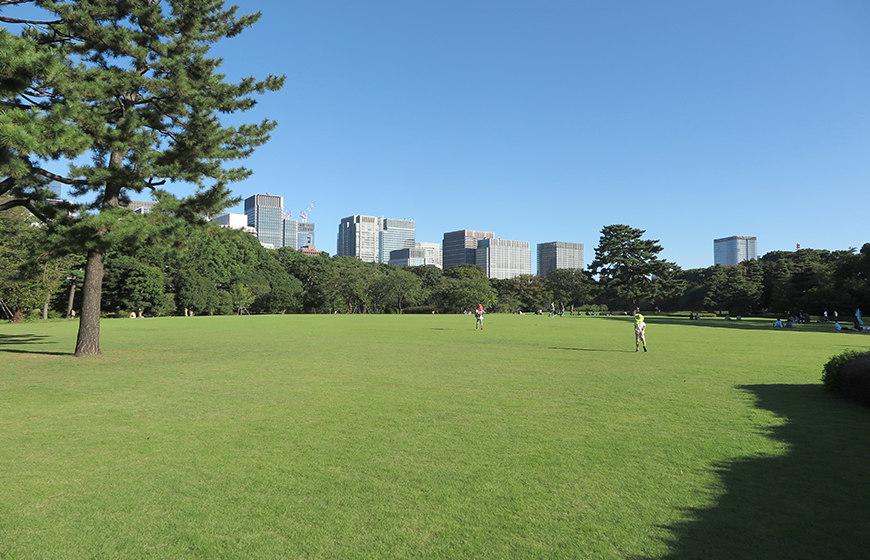
Edo Castle appeared in 1457. OTA Dokan had it constructed and later in 1524, it became a subsidiary castle of Hojo clan. In 1590, Hojo clan was destroyed by the Seige of Odawara by TOYOTAMI Hideyoshi and TOKUGAWA Ieyasu moved into Edo Castle. And in 1603, when Ieyasu was appointed Seii Taishogun, full-scale renovation work was conducted. Then, the castle town was expanded by cutting down Mt. Kanda, north of Edo Castle,and reclaiming the sea. In addition, Ninomaru citadel and Sannomaru citadel of Edo Castle were expanded and five-storied castle Tenshu was newly constructed.
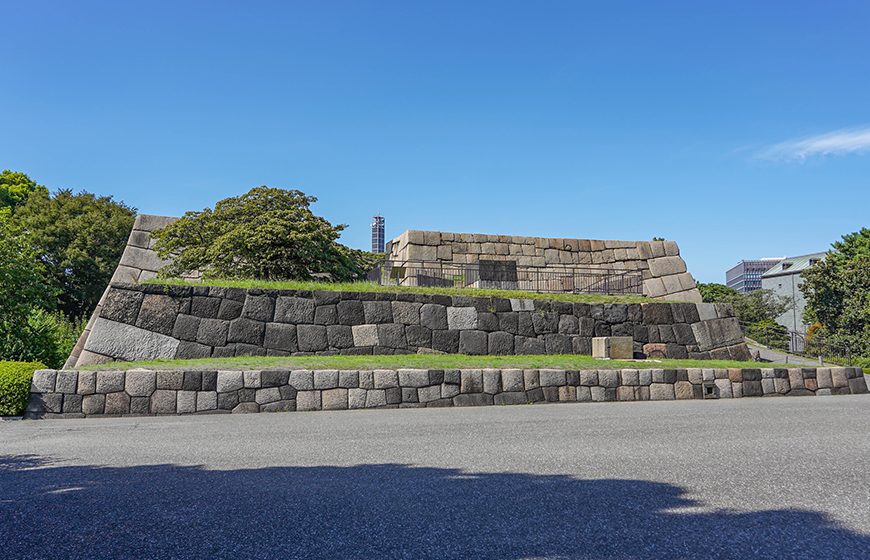
The Tenshu-dai base of the main tower is open to the public and you can climb up and enjoy the view. The Stone masonry remains. (about 41m from east to west, about 45m from south to north, hight 11m)
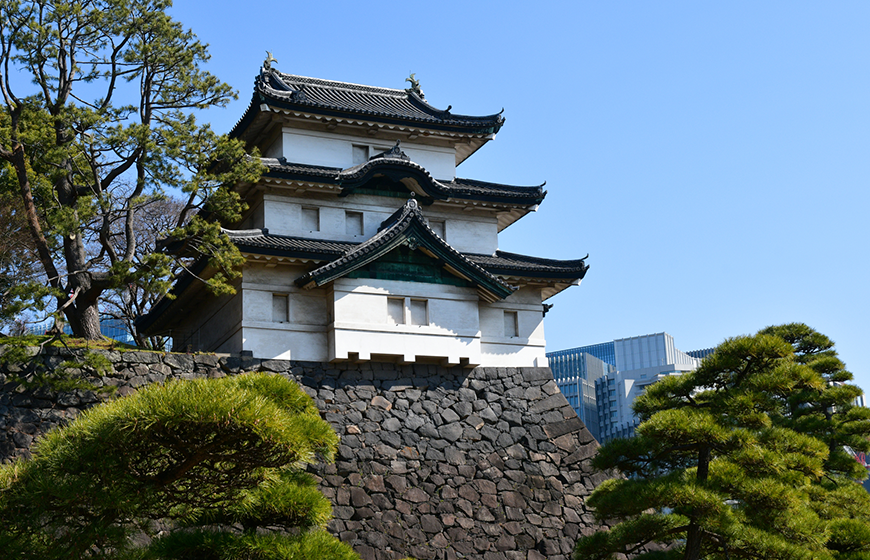
In the south of the ruin of Edo Castle, Fujimi Yagura(Mt.Fuji view keep) is located. This Fujimi Yagura is known as the three-storied watchtower that is the only remain as a histric landmark of Edo Castle. And at Honmaru Kyukeijo Zouchikuto, you can see the scale model of Edo Castle. The East Garden of the Imperial Palace can be accessed from three gates. From Takebashi Station, Hirakawa-mon Gate and Kita-hanebashi-mon Gate are closer and from Otemachi Station, Ote-mon Gate is closer.

The East Gardens of the Imperial Palace Read more
| Address | 1-1 Chiyoda, Chiyoda-ku, Tokyo |
| TEL | 03-3213-2050 |
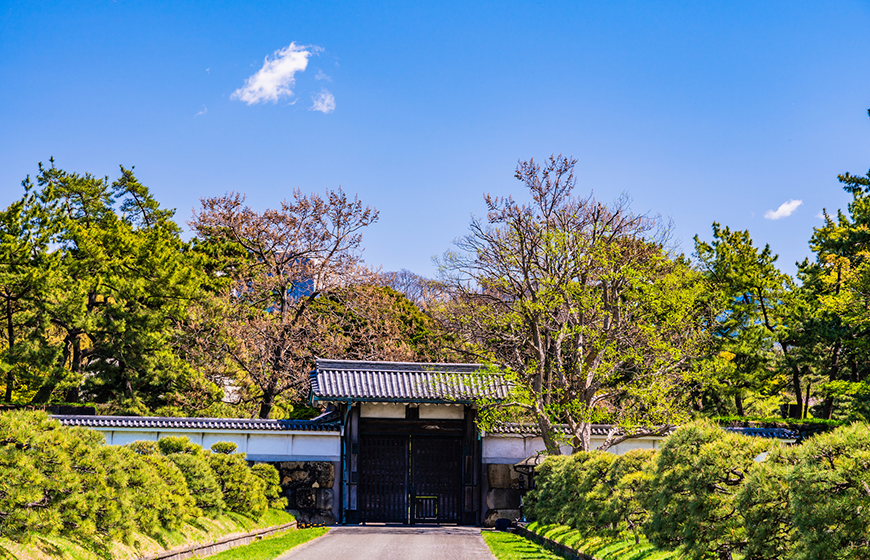
Hanzo-mon Gate, 5-minute walk from subway Hanzomon Station. It was built on the west side of Edo Castle to protect Edo Castle that topographically weakly defended at that time.
It is said that the gate was named Hanzo-mon Gate after Hattori Hanzo on whom Tokugawa Ieyasu relied very much. Hattori Hanzo's Iga samurais were garrisons. Other gates of Edo Castle were named after lands or rivers but only this Hanzo-mon Gate was named after a person.
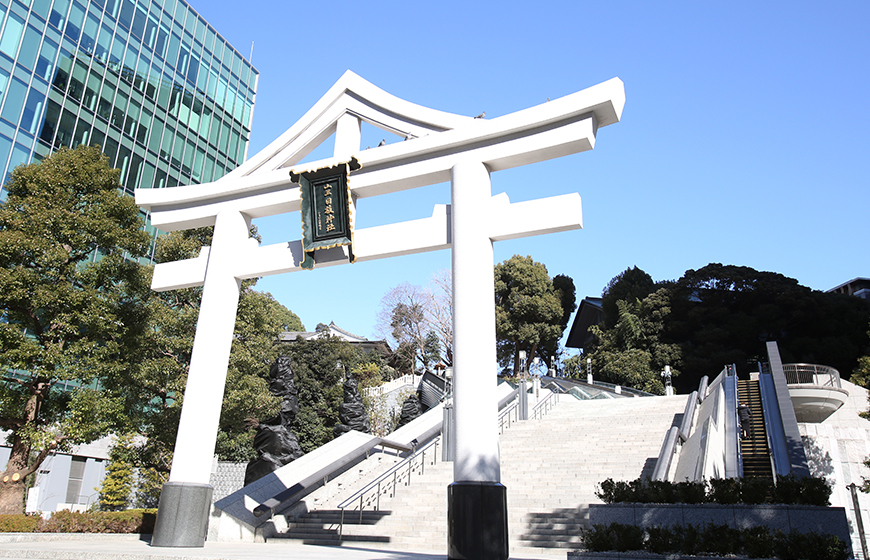
Hie-jinja Shrine, 3-minute walk from Subway Akasaka Station or Tameike-sanno Station. This Hie-jinja Shrine is said to have been built during Kamakura era. Later, in 1478, Ota Dokan once again enshrined the god of Hie-jinja Shrine inside Edo Castle. In 1590, after Tokugawa Ieyasu settled in the castle, the shrine is said to have been worshipped as the guardian deity of Tokugawa-shogun Families and local deity of Edo. Its rites and festivals were offered protection and floats and the Sanno-matsuri procession entered inside Edo Castle and Shogun himself viewed them. Because of this the festival was called Tenka-masuri (festival of the world) together with Kanda Festival.
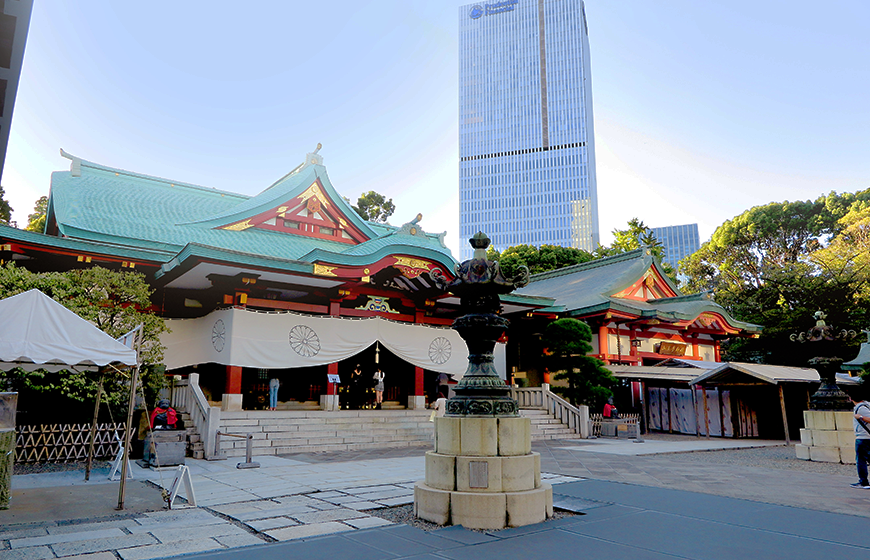
Later in the year 1657, it was hit by the greatest fire called Great Fire of Meireki during Edo era. The shrine pavilion was burned down but the two years later, it was rebuilt in the present place and has been watching people's safety to this day since then.
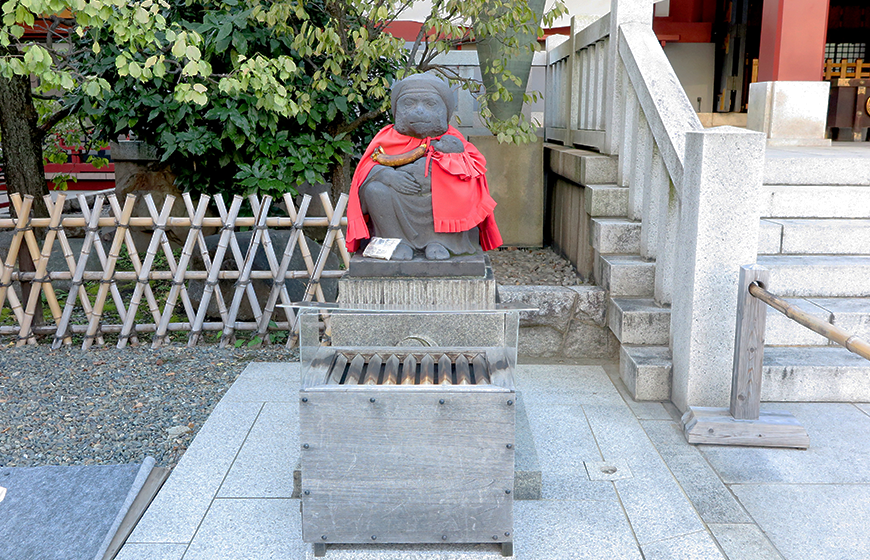
Monkeys have been respected as guardians of mountains since old times. In front of the Main Shrine, there is a couple of husband and wife, Statue of divine monkeys.
The main deity of this Shrine, Oyamakui-no-kami governs mountains, and is believed as a guardian of generation and progress of all beings. Also in the precincts, Sanno Inari Shrine, Yasaka Shrine and Sarutahiko Shrine are enshrined as auxiliary shrines.
Homotsu-den (Collection Hall) within the premises, houses many treasures including the swords dedicated by successive generation of Tokugawa Shogun.

Hie-jinja Shrine Read more
| Address | 2-10-5 Nagatacho, Chiyoda-ku, Tokyo |
| TEL | 03-3581-2471 |
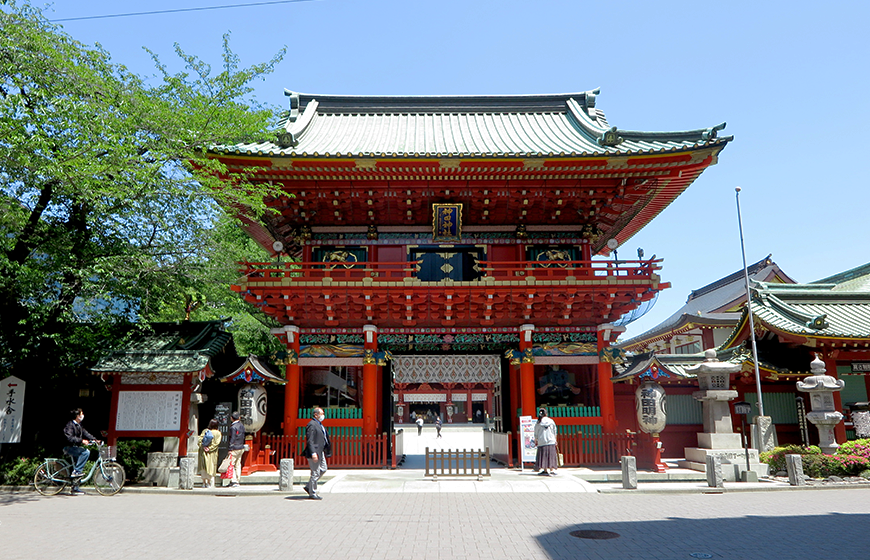
Kanda Myojin Shrine is 5-minute walk from JR Ochanomizu Station, Subway Shin-Ochanomizu Station or Suehirocho Station. In 1600, it is known as the shrine where Tokugawa Ieyasu prayed for victory during the Battle of Sekigahara. September 15th, when he won the Battle of Sekigahara successfully, fell on the day of Kanda Festival, Tokugawa Shogunate families ordered that the festival should be carried out continuously.
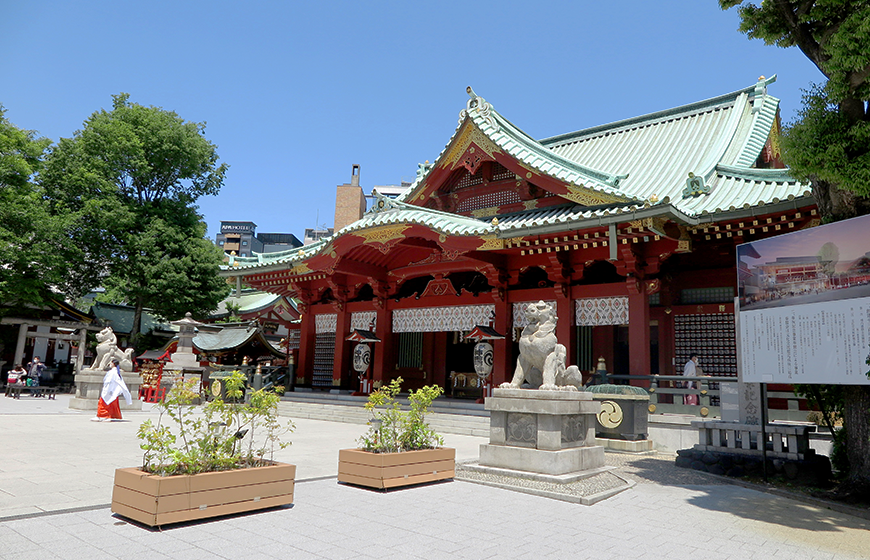
In 1616, Kanda Myojin Shrine was moved to its present location in Soto-kanda, Chiyoda city, to protect the demon's gate of Edo Castle. The shrine building built by the Shogunate is the present Kanda Myojin shrine.
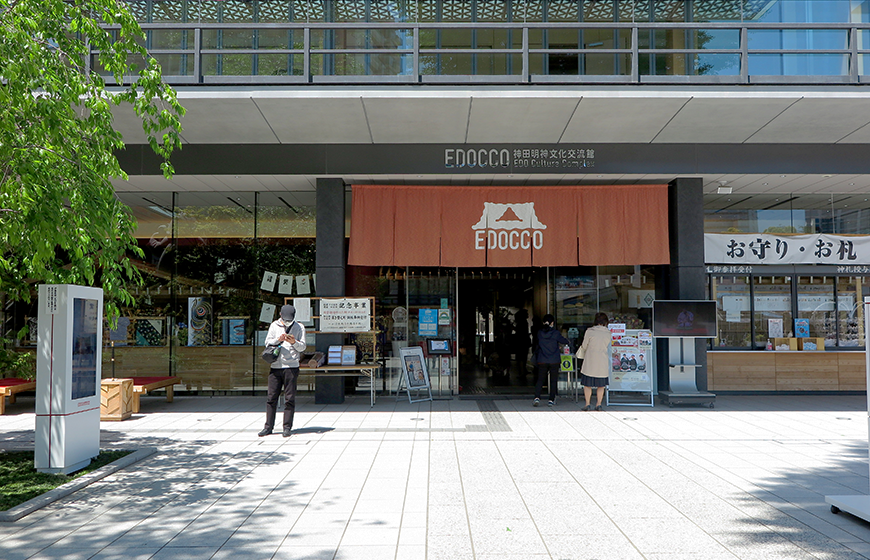
At "EDOCCO" inside the precincts, there are restaurants and souvenir shops.
The Kanda Festival is still known as a festival that attracts many visitors even after the festival month was changed from September to May.

Kanda-jinja Shrine (Kanda Myojin Shrine) Read more
| Address | 2-16-2 Soto-Kanda, Chiyoda-ku, Tokyo |
| TEL | 03-3254-0753 |
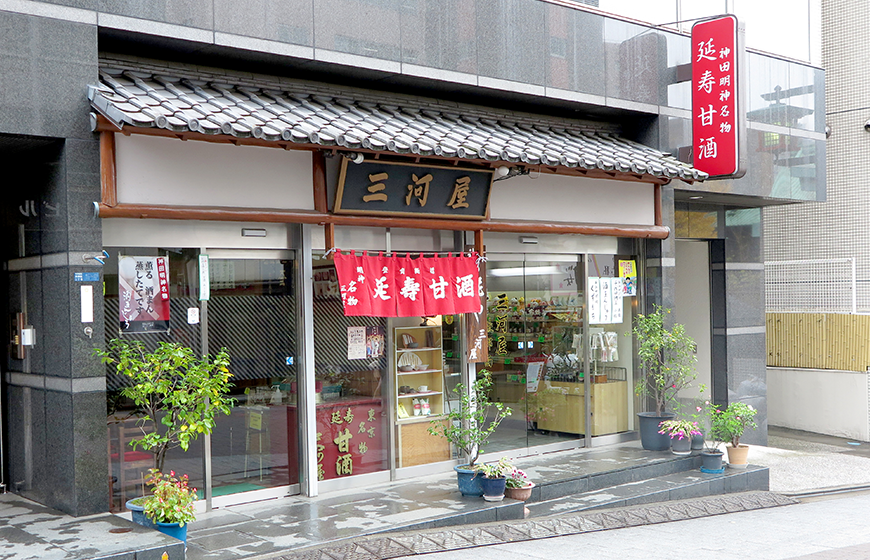
After going through the Great Torii Gate of Kanda Myojin Shrine, you'll find Mikawaya Ayabe Shoten on your right. Ever since the opening in 1616, they have been producing and selling koji (mold made from rice) products, this shop is well-established with a long history.
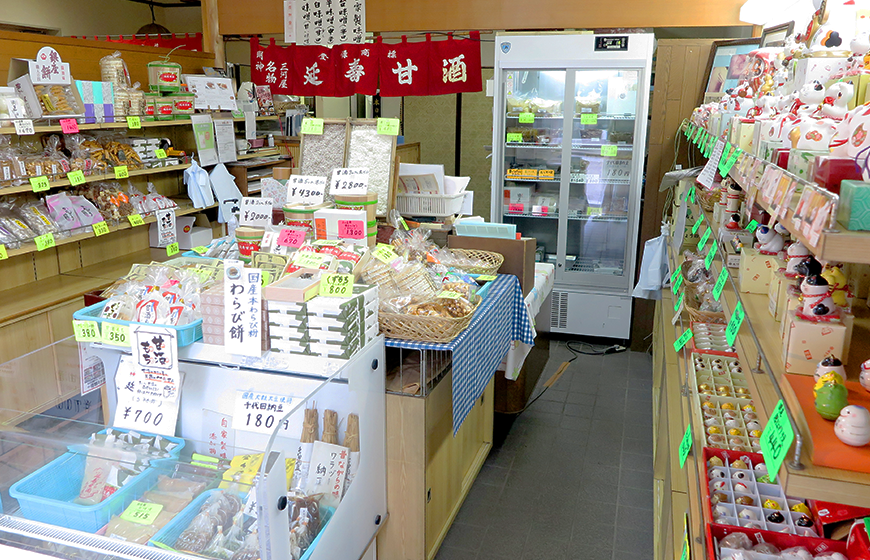
The founder of Mikawaya Ayabe Shoten was originally as a merchant under Tokugawa Shogunate in Mikawa-no-kuni (Aichi prefecture). After going to Edo together with Tokugawa Shogunate, in the same year when Kanda Myojin Shrine was built in the present place, Mikawaya Ayabe Shoten was also founded. Since then, the store has been doing business close to Kanda Myojin Shrine as a well-established store loved by a lot of people.
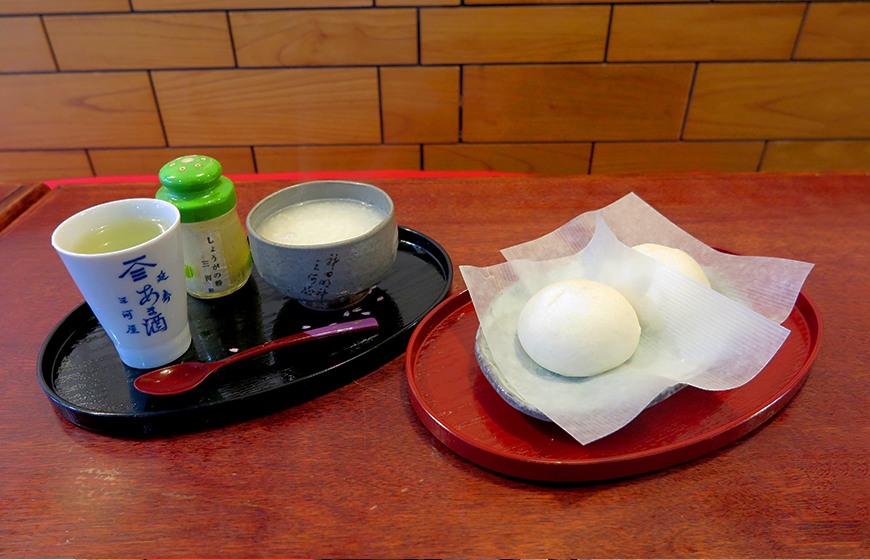
Inside the store, there is a tea space, and you can have Enju Amazake made with homemade koji and Sake Manju with soft and fluffy dough. Enju Amazake has smooth, mild texture and clean aftertaste. Good for souvenir.

Mikawaya Ayabe Shoten Read more
| Address | 2-17-3 Soto-Kanda, Chiyoda City, Tokyo |
| TEL | 03-3251-7086 |
| Business Hour | Monday to Saturday 9:00 a.m. - 5:00 p.m. |

Onjuku Inari Shrine
Akihabara・kanda
Detail

Shinpoji Temple
Koujimachi・Hanzoumon・Nagatacho
Detail

Statue of De Liefde
Imperial Palace・ Tokyo Sta.・ Hibiya
Detail

Hirakawa-tenmangu Shrine
Koujimachi・Hanzoumon・Nagatacho
Detail

The East Gardens of the Imperial Palace
Imperial Palace・ Tokyo Sta.・ Hibiya
Detail

Hanzo-mon gate
Koujimachi・Hanzoumon・Nagatacho
Detail

Hie-jinja Shrine
Koujimachi・Hanzoumon・Nagatacho
Detail

Kanda-jinja Shrine (Kanda Myojin Shrine)
Akihabara・kanda
Detail

Mikawaya Ayabe Shoten
Akihabara・kanda
Detail